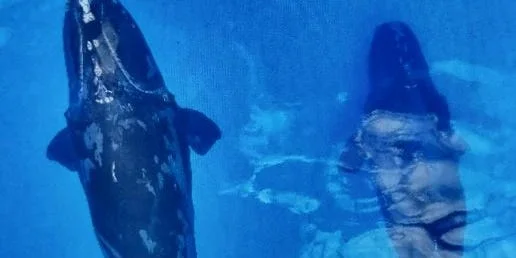
The Incredible First Sighting of North Atlantic Right Whales in the Bahamas
In a groundbreaking event for marine conservation, two critically endangered North Atlantic right whales were spotted in the Bahamas for the first time in recorded history. This momentous sighting took place on April 15, 2025, and highlights both the fragility and resilience of this rare whale species.
Captain Isaac Ellis, from Neal Watson's Bimini Scuba Center, led a dolphin-watching tour when he first caught sight of the whales. "That moment for me was breathtaking, and I couldn’t fully gather myself. I thought it was fake at first," Ellis stated. His surprise reflects the astonishing rarity of this event; until this sighting, North Atlantic right whales had never been documented in Bahamian waters, despite their close proximity to Florida.
The whales, identified as females named Koala and Curlew, have been observed traveling together for several months. This unusual behavior adds to the intrigue, as right whales typically do not remain in pairs unless they are mother and calf. Philip Hamilton, a senior scientist at the New England Aquarium, remarked, "It is fairly unusual for right whales to be seen in the Gulf of Mexico, and there are no recorded sightings of right whales in The Bahamas." Their journey might reveal important insights into their migratory patterns.
The current population of North Atlantic right whales is estimated at just 370, making them one of the most endangered mammals on earth. Their decline is primarily attributed to ship strikes and entanglements in fishing gear. The latest data indicates that more than a quarter of these whales have perished since 2011. Moreover, climate change exacerbates their plight by affecting the abundance of copepods, their primary food source, in the warming waters off the northeastern U.S. coast.
Interestingly, sightings of Koala and Curlew coincide with their recent presence in the Gulf of Mexico, where they were documented earlier this year. These sightings, though extremely rare, spark hope for both researchers and conservationists who have been advocating for the protection of these majestic creatures.
Overall, the appearance of the right whales in the Bahamas not only marks a historical moment for marine biology but also serves as a reminder of the pressing necessity to protect endangered species and their habitats. Questions arise: what drove these whales to migrate to such unusual territories, and how can ongoing conservation efforts continue to support their survival?
Have you ever encountered a wildlife sighting that felt extraordinary? Share your experiences and thoughts in the comments below, and let’s continue this important conversation about protecting our natural world.